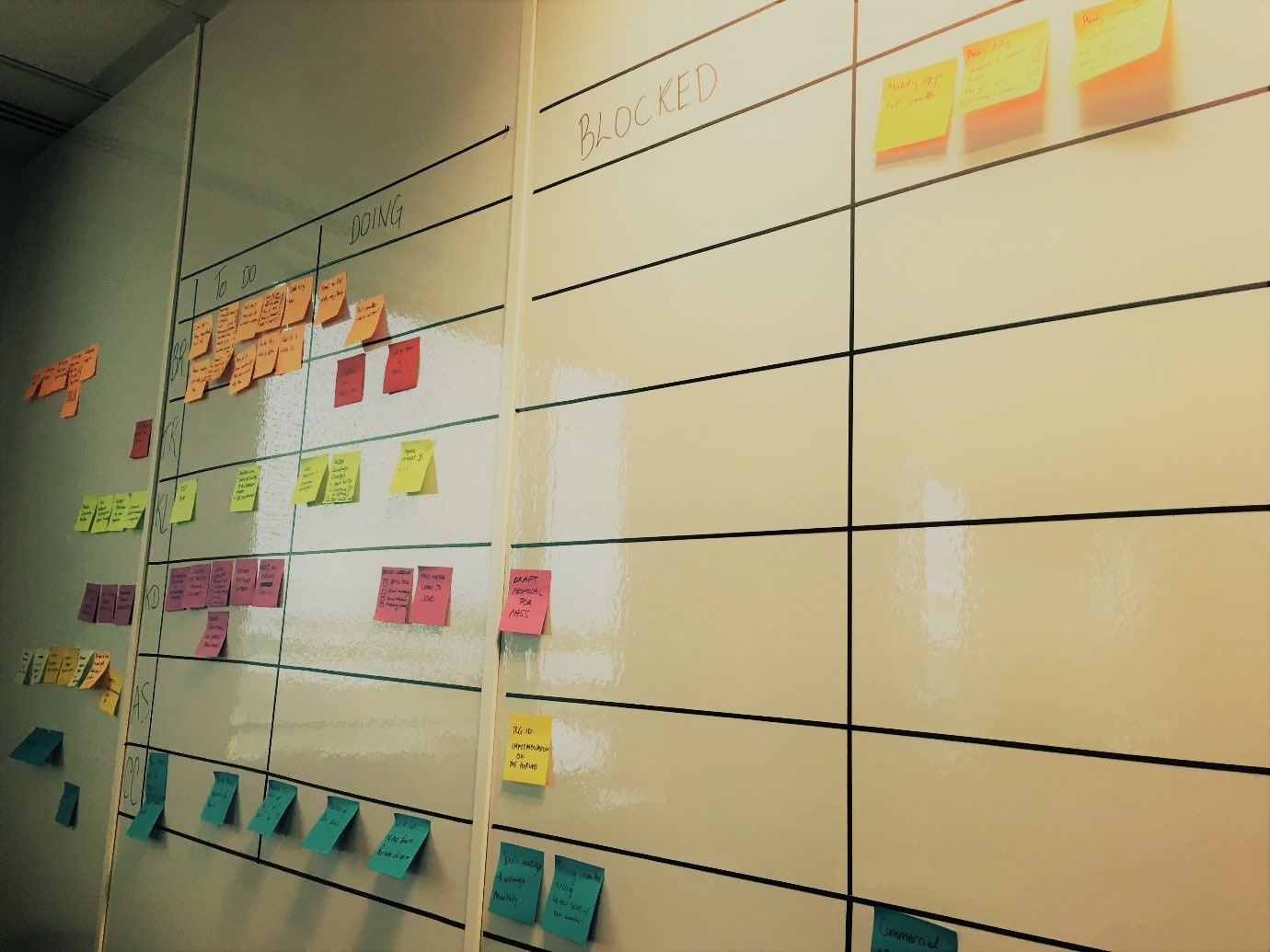Five ways we’ve implemented Agile marketing at Redgate
 Implementing Agile working practices reminds me of Communism – if we just did it properly, everything would work perfectly! All projects would be a dream to work on, all deliveries would be early, the customers would get exactly what they needed, and so on.
Implementing Agile working practices reminds me of Communism – if we just did it properly, everything would work perfectly! All projects would be a dream to work on, all deliveries would be early, the customers would get exactly what they needed, and so on.
However, perfection is the enemy of progress. We’ve implemented an interpretation of the Agile principles in our marketing division. And it has its shortcomings*. But I think the benefits we’ve gained significantly outweigh the things we’re not doing ‘quite right’.
So I wanted to write about how we’ve pragmatically implemented elements of Agile working in our marketing department, and why it has helped us so much. And if you’re interested in this way of working, and want to join our marketing department – we have an open role! Please get in touch, or apply online – we’d love to hear from you.
What we’ve implemented and why it’s helped
- Sprints – we run a one-week sprint cycle. Given the nature of our tasks and the time that’s appropriate for planning, one week seemed right, and has worked really well. We plan the week ahead on Monday mornings (at the sprint planning session) and have enough foresight to do this. We find that by the end of the week we’ve generally achieved most tasks, and managed to stick to things we’ve committed to. The benefit of this is that, during the week, we commit to the activities we said we would do, that we said were important at the start, without too much distraction or deviation.
- A whiteboard to track progress – with ‘To Do’, ‘Doing’, ‘Blocked’ and ‘Done’ columns (see the pic above). Why has this helped? We fill the whiteboard (the ‘To Do’ section) at sprint planning, and have found it very useful for spotting blocks (whether each other, or from outside the team), for helping each other out (“I’ll pick up that”, or “I know the answer to that, I did it last week”) and to ensure everyone knows what everyone else is doing.
- Daily stand-ups – these are short and sweet (between 5 and 15 mins, for each team of around 6 people), but help with the issues mentioned above (unblocking each other, keeping progress on track, sharing information). Additionally, as we move Post-its from ‘To Do’ in to ‘Doing’, it highlights where we’re taking on too much work, potentially causing problems with flow. It’s not quite proper Kanban, but the principle is similar. The important point is that every team in marketing does a daily stand-up, so we’re all following the same process.
- Sprint planning – this, for me, is one of the most useful aspects. Each Monday we spend around an hour working on what the priorities are for the week – how are we tracking against the higher level plan? What were the problems last week? What’s going wrong? What do the marketing metrics say? Is there anything we need to jump on? What are the divisional objectives that we all signed up to, and are we doing well on these? The enormous benefit is that we are constantly checking and course-correcting week by week – we’re not resolutely sticking to a plan just because it was written eight months before, but are checking the outcomes of our efforts and trying to correct where appropriate. And it also stops drift – a weekly check against objectives ensures we’ve not all working on things which don’t align with our goals.
- Cross-functional – okay, we’re all marketing, but the teams within marketing consist of people representing brand, outbound marketing, inbound/content, product marketing, administrative support and management. So it certainly helps break down any potential siloes between those groups, to see how we can help each other.
These are the main elements that we’ve implemented and, as I say, we’ve found it to be very practicable and useful. We had great support from the rest of the business setting the process up, and without that we could easily have fallen into many of the pitfalls (too much process, too little process, wrong length sprints, wrong sized tasks, 45 minute stand-ups, and so on), but we’ve found the practical approach we take helps enormously with the throughput of work and with making sure we’re working effectively on the right things.
If you’re interested in working this way, please get in touch – we’d love to hear from you.
* We’re lucky at Redgate to have a very advanced and mature approach to Agile across most of the business – I suspect I’m going to get a tap on the shoulder from one of our excellent Agile Coaches any day now, about some of the ‘interpretations’ of Agile working outlined here; and rightly so …